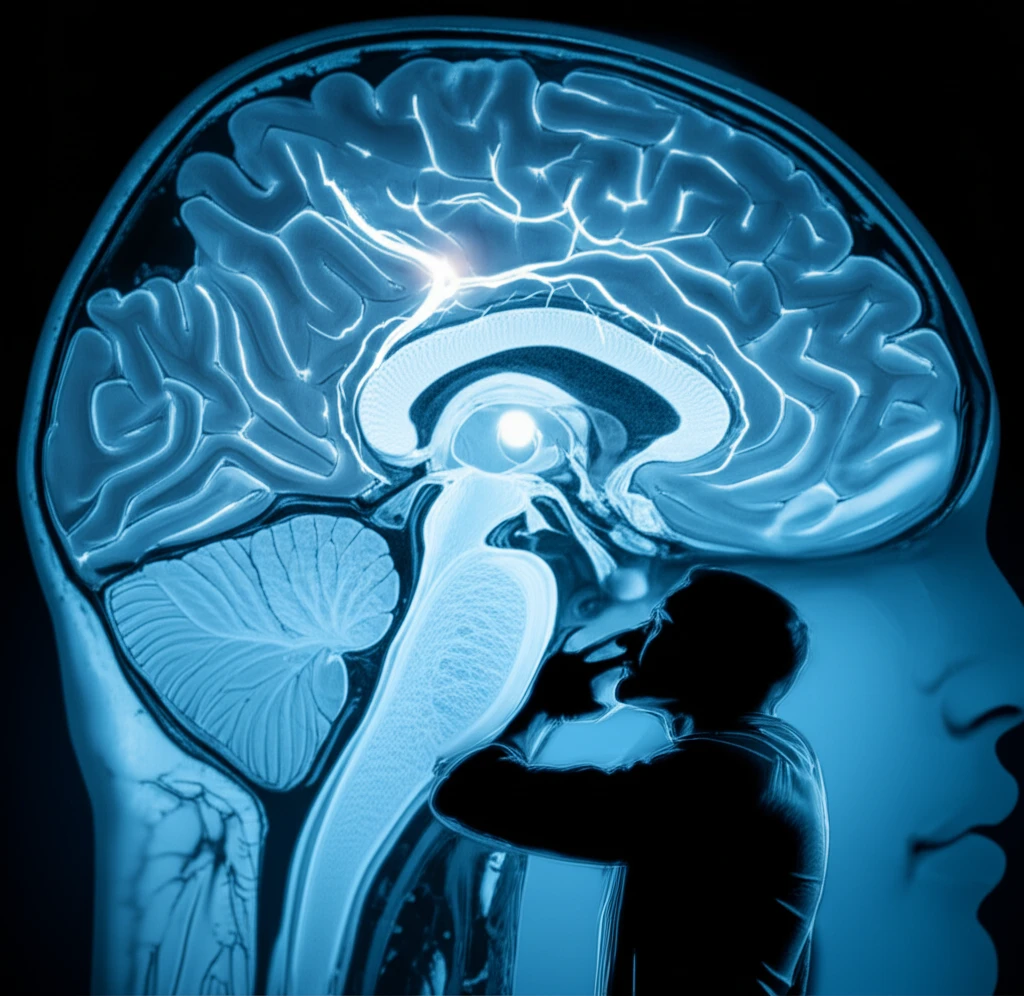
Deep Brain Stimulation Breakthrough: 7T MRI Pinpoints Key Target in Parkinson's
"High-resolution imaging combined with histology offers a new level of precision for targeting the pedunculopontine nucleus in DBS."
Deep brain stimulation (DBS) has emerged as a promising treatment for Parkinson's disease, particularly for symptoms that don't respond well to medication. One key target for DBS is the pedunculopontine nucleus (PPN), a region in the brainstem involved in motor control, balance, and gait. However, accurately locating the PPN for DBS can be challenging due to its small size and the limitations of conventional MRI techniques.
Traditional MRI scans often struggle to clearly distinguish the PPN from surrounding brain structures, making precise targeting difficult. Recent research has focused on using advanced imaging techniques, such as diffusion tensor imaging (DTI), to visualize the white matter tracts that surround the PPN and use them as landmarks. DTI measures the direction and magnitude of water diffusion in the brain, providing detailed information about the organization of white matter.
A groundbreaking study published in Surgical and Radiologic Anatomy has taken this approach a step further by combining high-resolution 7T MRI with histological validation. The researchers were able to precisely identify the PPN and its surrounding white matter tracts in a post-mortem brain, paving the way for more accurate and effective DBS targeting in Parkinson's disease.
Unlocking the PPN: How 7T MRI and DTI Improve Targeting

The study, led by researchers at Radboud University Medical Center and Maastricht University Medical Center, used a 7T MRI scanner – a powerful imaging tool that provides exceptionally detailed images – to scan a post-mortem brain. They also used DTI to map the white matter tracts surrounding the PPN.
- DTI and White Matter Tracts: DTI allowed them to visualize the superior cerebellar peduncle (SCP) and the medial lemniscus (ML), two major white matter tracts that border the PPN.
- FA Maps: They used fractional anisotropy (FA) maps, which are derived from DTI data and show the degree to which water diffusion is restricted in a particular direction. The PPN appeared as an area of low FA, surrounded by the high FA values of the white matter tracts.
- Histological Validation: The histological sections confirmed the location of the PPN as a distinct area between the SCP and the ML.
The Future of DBS: Personalized Targeting for Better Outcomes
This study provides strong evidence that 7T MRI, combined with DTI, can be used to precisely identify the PPN and its surrounding white matter tracts. This has significant implications for deep brain stimulation in Parkinson's disease, as it could lead to more accurate targeting and improved clinical outcomes.
By using these advanced imaging techniques, neurosurgeons may be able to personalize DBS therapy by tailoring the placement of electrodes to the individual patient's anatomy. This could result in greater symptom relief and fewer side effects.
While this study was conducted on a post-mortem brain, the researchers emphasize the need for in vivo validation to confirm these findings in living patients. Future research will focus on translating this technology to the clinic and evaluating its effectiveness in improving DBS outcomes for people with Parkinson's disease. The future of DBS lies in precision, and this research brings that future closer to reality.
